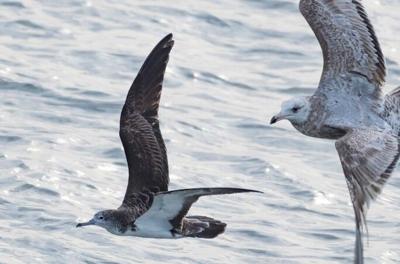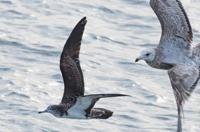LEWES, Del. - Three birders aboard the Cape May–Lewes Ferry on the evening of May 11 made an astonishing discovery: the first documented sighting of a Streaked Shearwater in the north Atlantic Ocean.
Christy Hibsch, along with Cassandra and Julia Chojnacki, spotted the unfamiliar bird just miles from the southernmost tip of New Jersey as they crossed the mouth of the Delaware Bay. The seabird stood out immediately with its heavily streaked white head, pale scalloping on the upperwings and rump, and a thin, grayish bill—features inconsistent with any of the Atlantic’s typical shearwater species, said the American Birding Association.
Photos captured during the sighting revealed a diagnostic dark smudge across the pale underwing primary coverts. After sharing the images with the seabirding community, experts confirmed the bird as a Streaked Shearwater (Calonectris leucomelas), a species that normally resides in the Pacific Ocean and has not been recorded in the Atlantic basin since a March 2003 sighting by those on a pelagic voyage out of Cape Town, South Africa. That sighting occurred close to the Indian Ocean boundary.
The Streaked Shearwater breeds on islands near Japan, Korea, China and Russia, and typically ranges from Indonesia to Australasia outside of the breeding season. While there are more than a dozen accepted records from California and two from Oregon, this marks an unprecedented leap across the continental divide says ABA.
This occurrence aligns with a rising trend of Pacific seabirds turning up in unexpected oceans. Other notable inter-ocean vagrants include a Tahiti Petrel spotted off North Carolina in 2018, Wedge-tailed Shearwaters increasingly seen on the Atlantic and Gulf Coasts since 2021, and Short-tailed Shearwaters recorded in the Great Lakes region in both 2023 and 2024 reports ABA.
While the association says the causes behind these displacements remain speculative, some ornithologists point to a combination of increased observer coverage, improved photo equipment, better community networks and shifts in ocean conditions, including rising temperatures and altered storm patterns, as contributing factors to these major changes.







